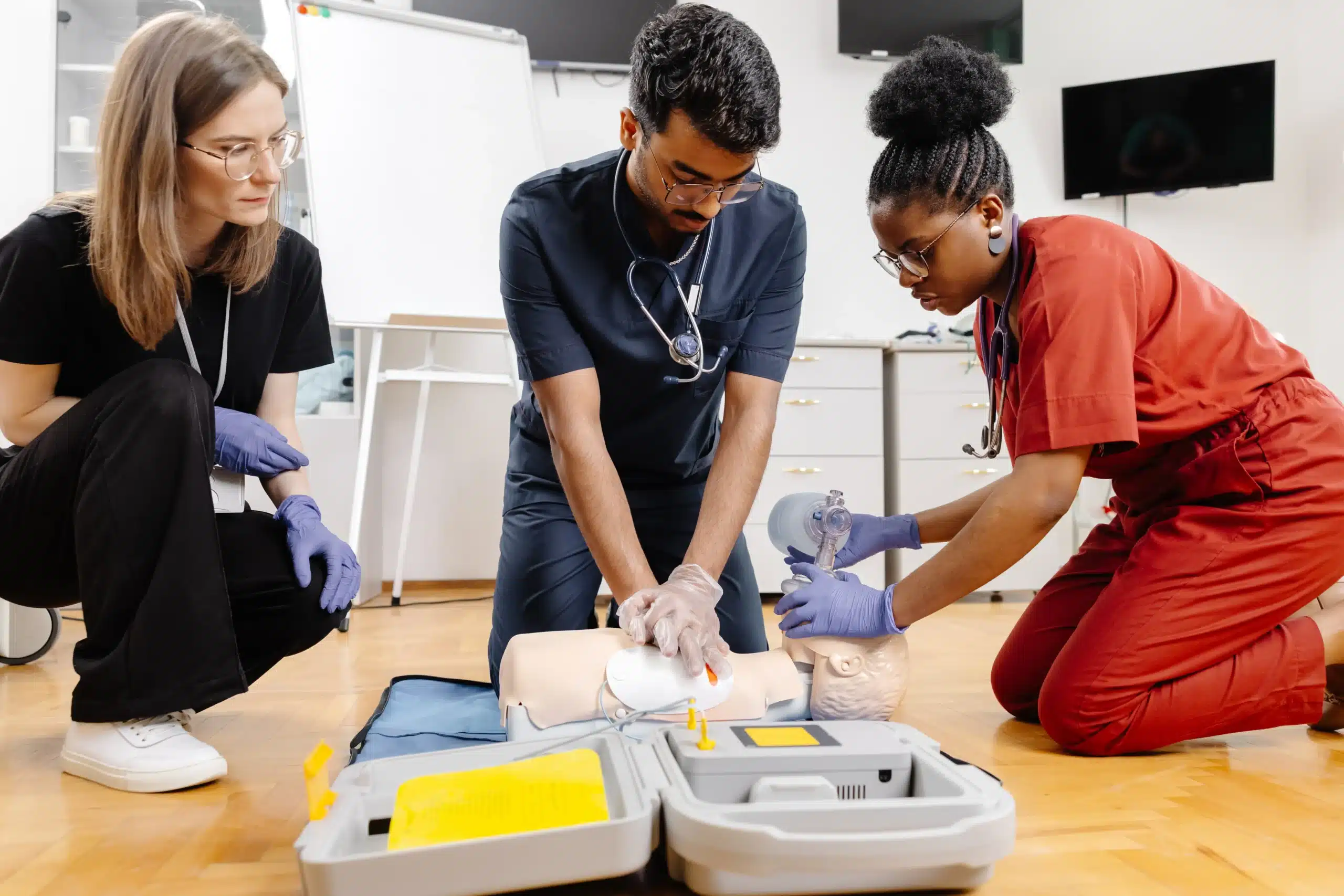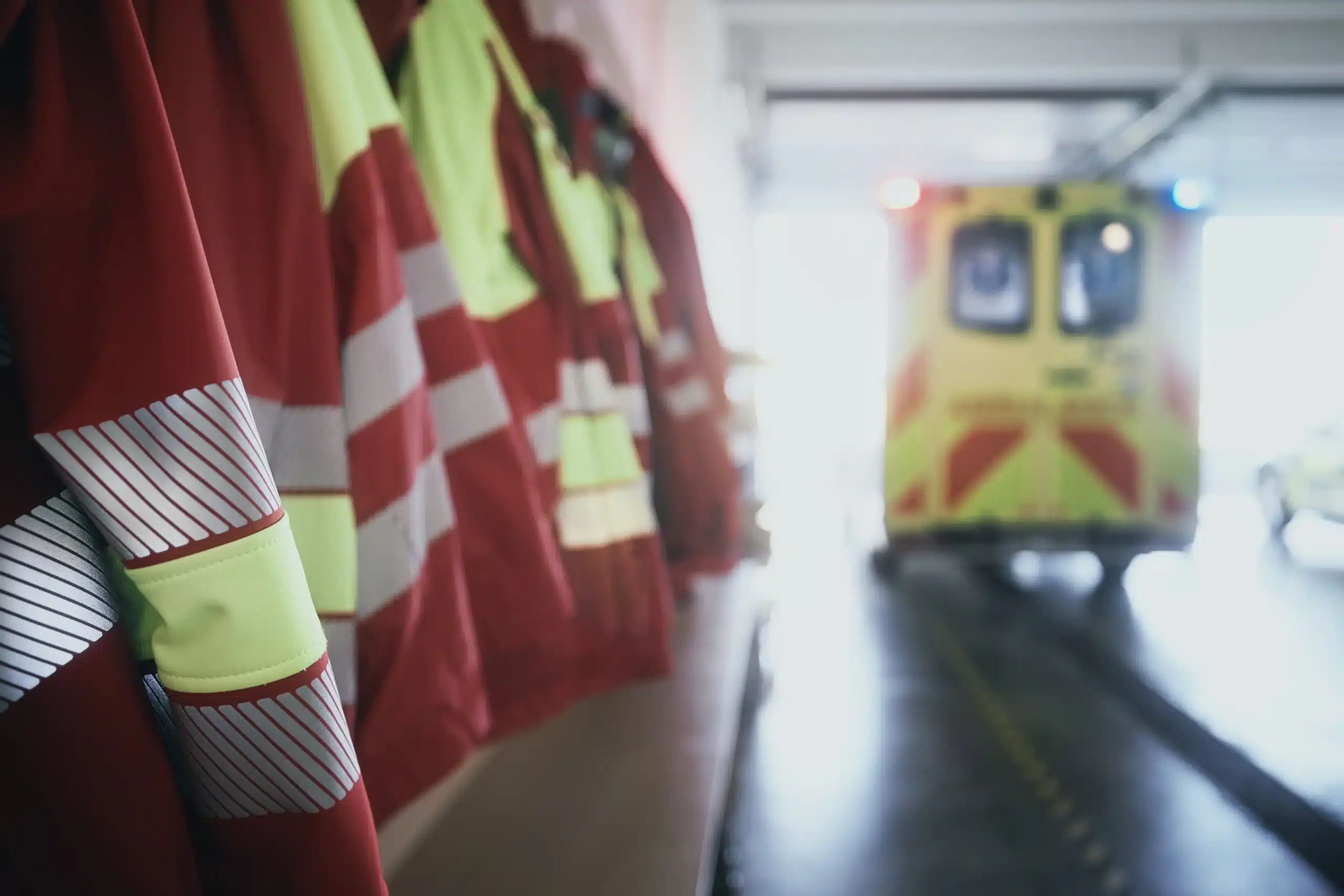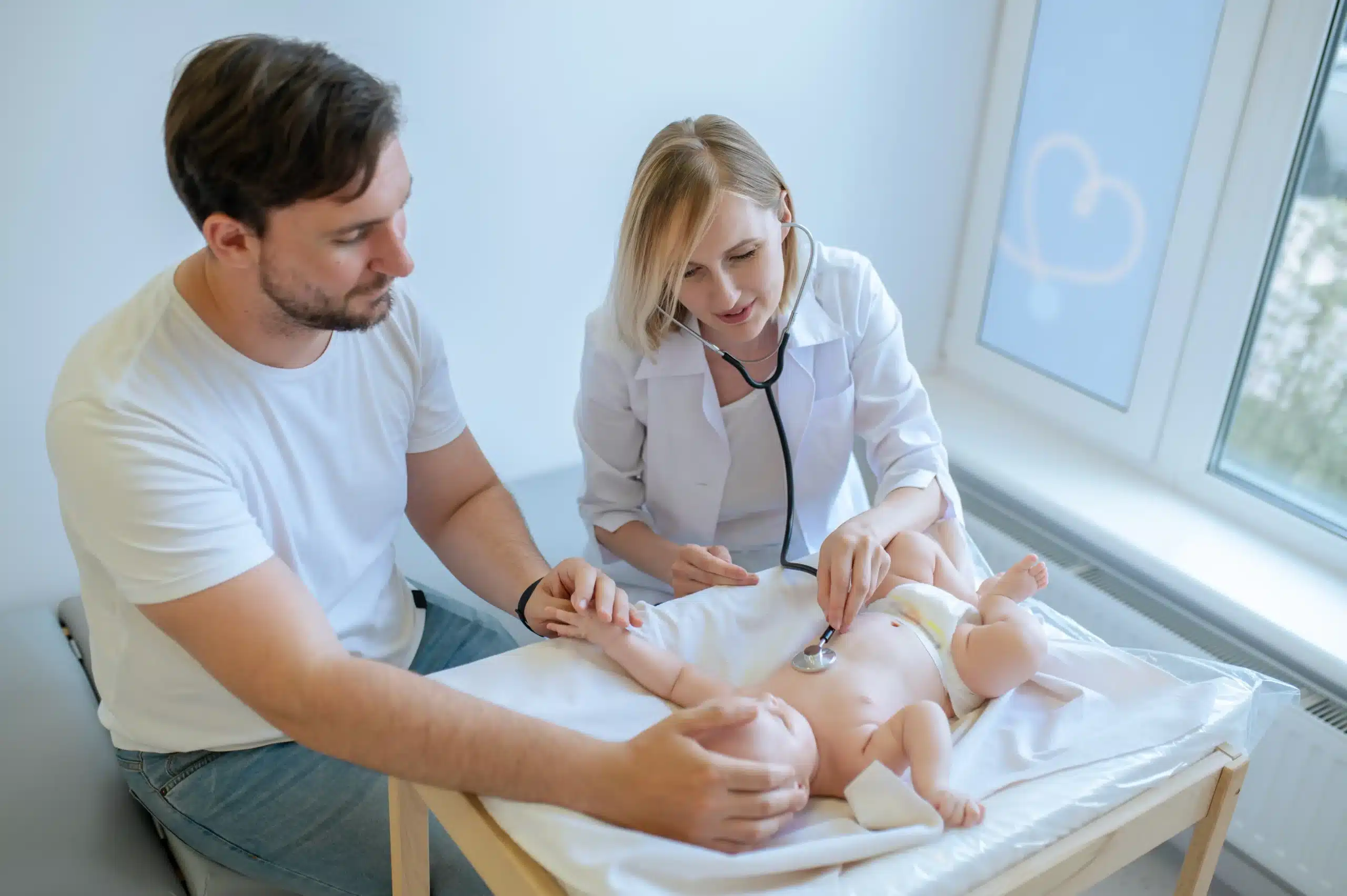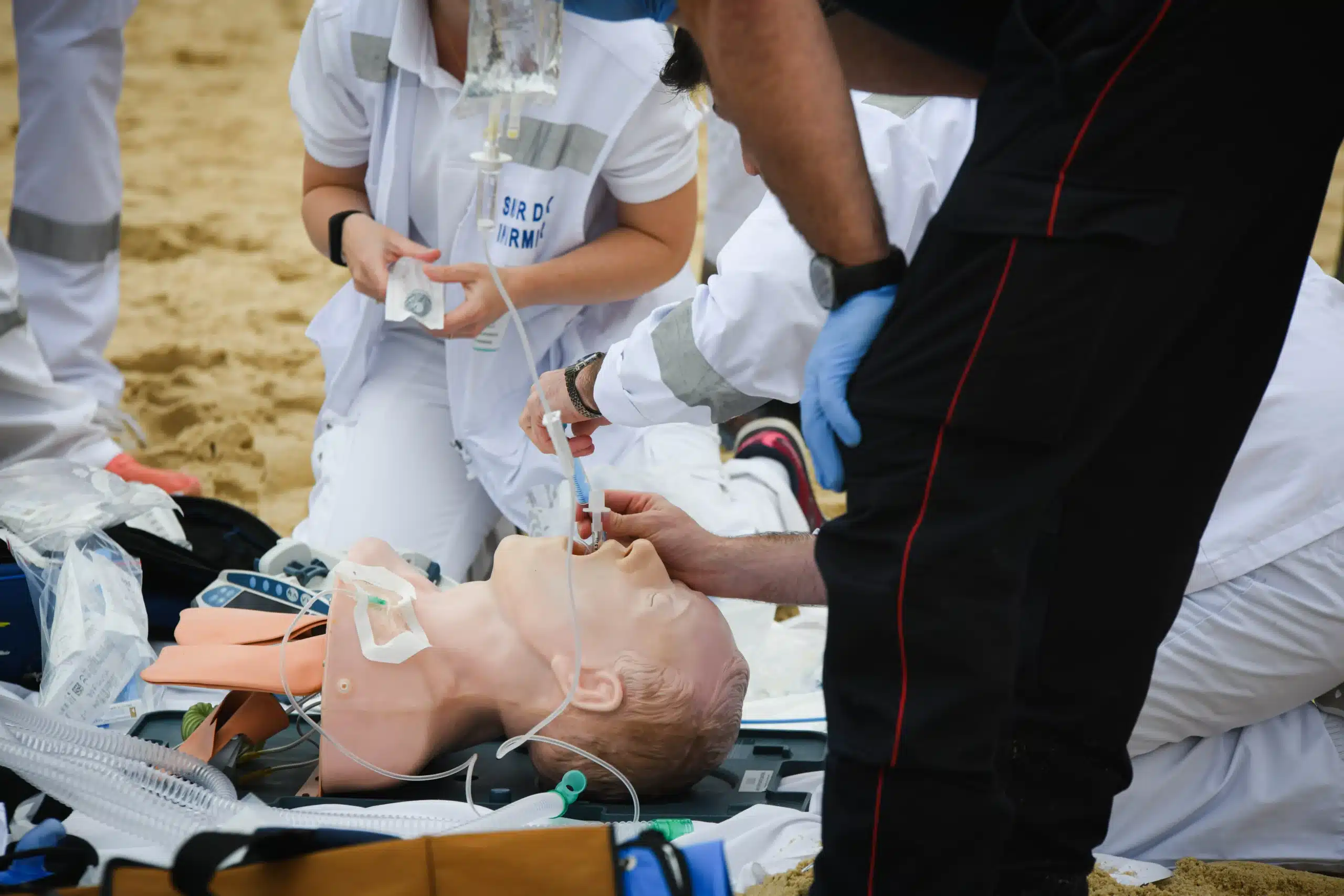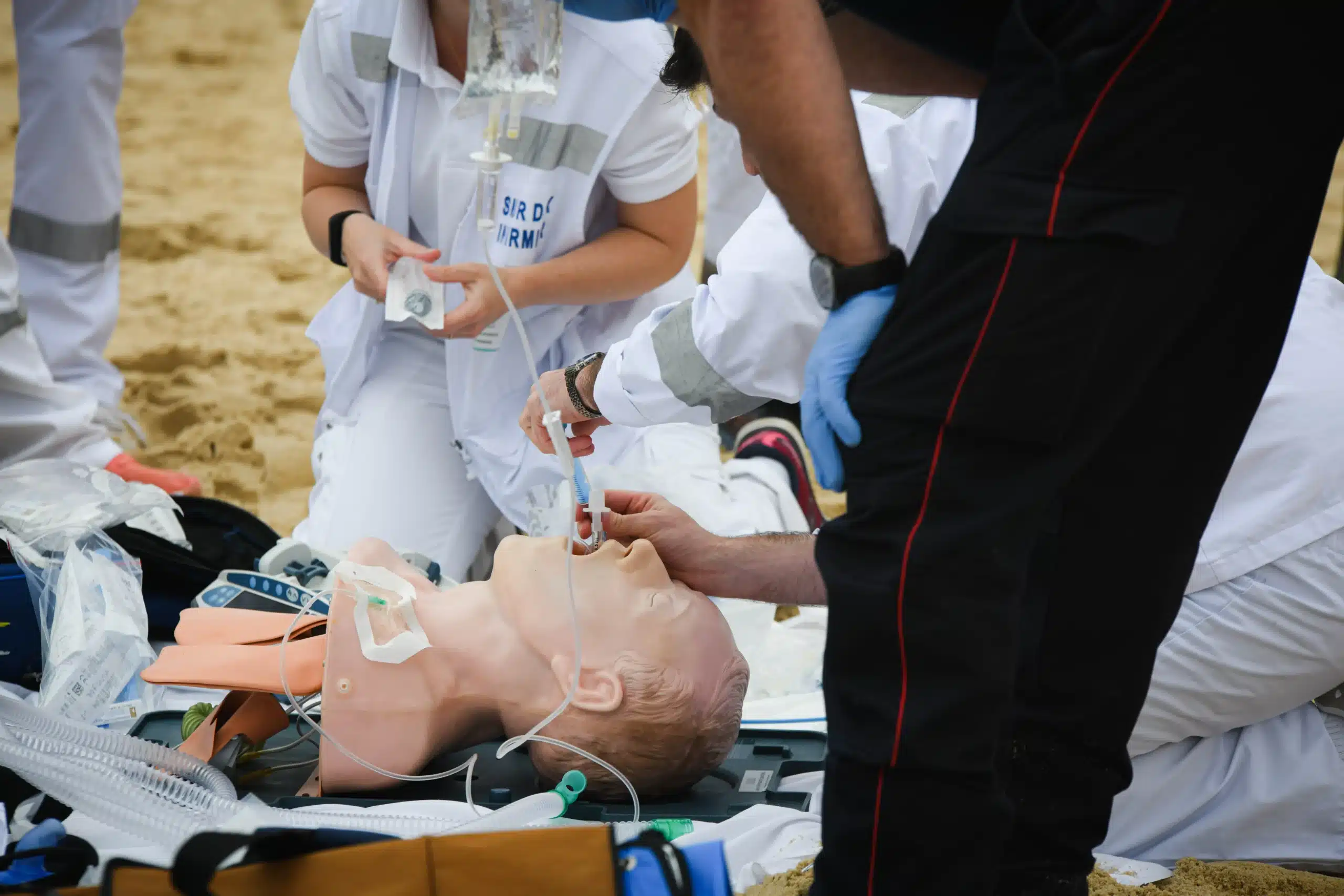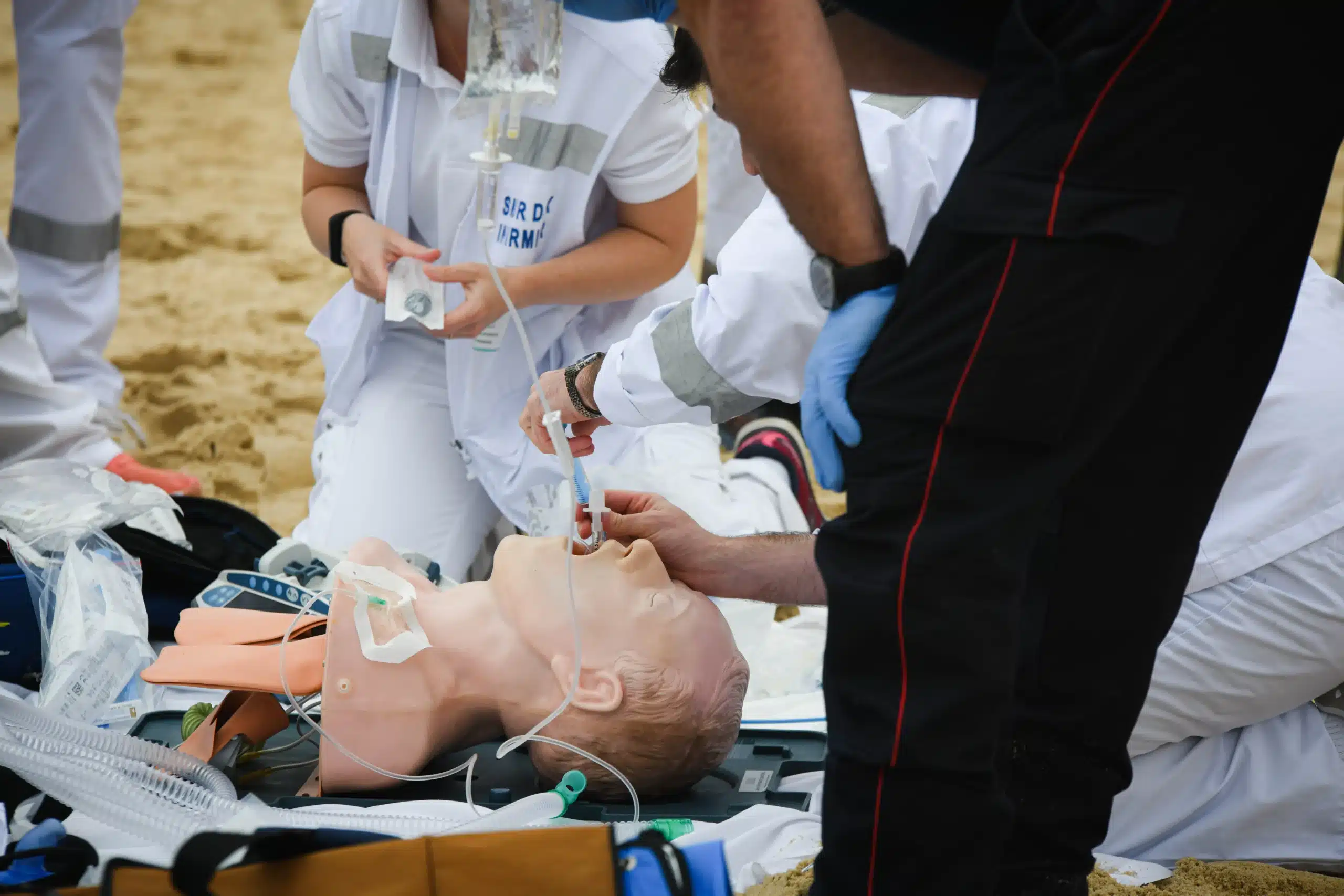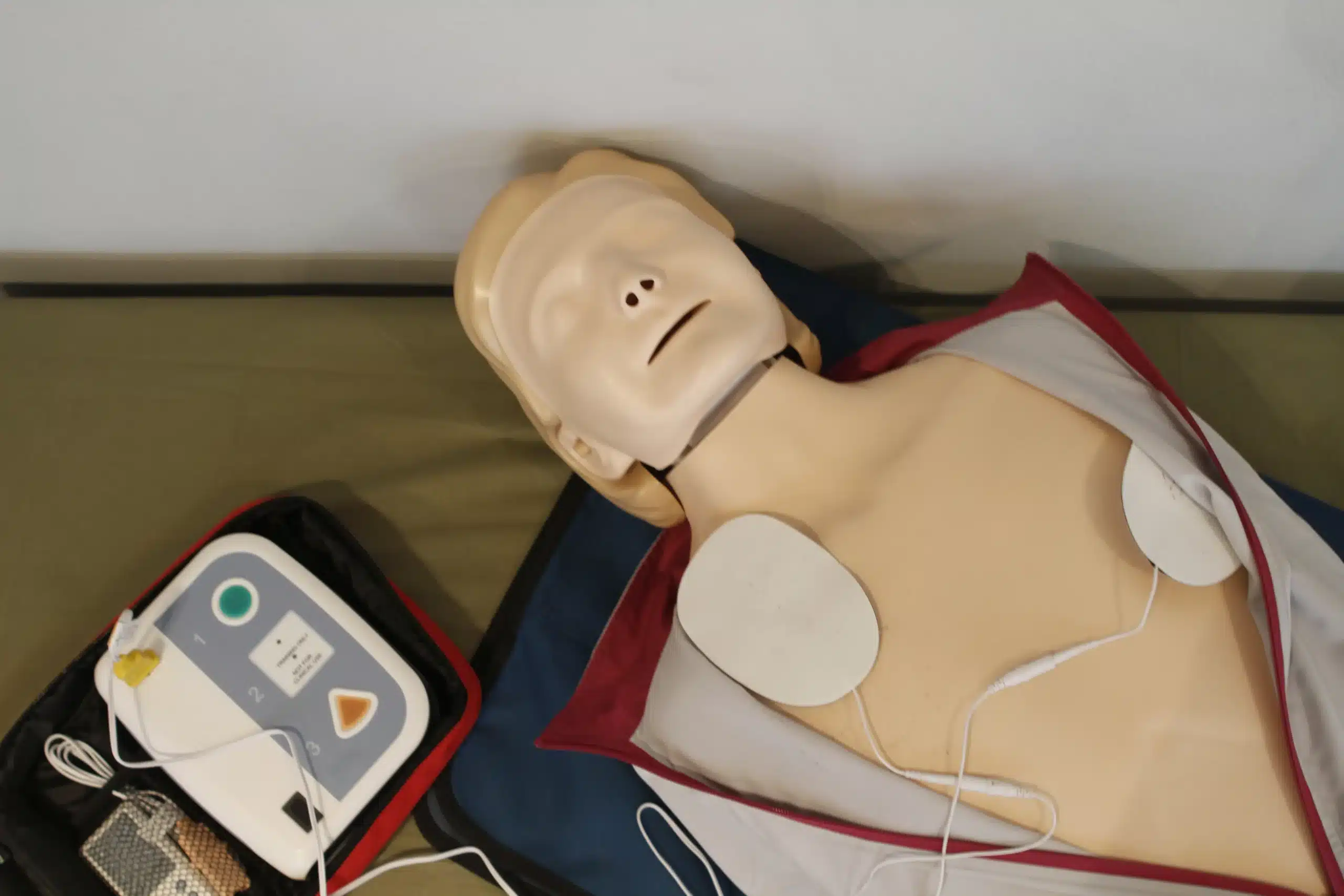Emergencies can happen anytime, anywhere. Would you know what to do if someone near you suddenly collapsed? BLS training gives you the skills and confidence to respond effectively in these critical situations. It’s about more than just knowing CPR; it’s about understanding how to assess a situation, provide immediate care, and potentially save a life. This training is an investment in yourself and your community, empowering you to make a difference when it matters most. If you’re looking for bls training nearby, this guide will walk you through everything you need to know, from the importance of BLS to finding the right course and mastering essential life-saving techniques.
Key Takeaways
- BLS training is a life-saving skillset: From CPR and AED use to choking relief, BLS equips you to handle emergencies and potentially save lives. Find a course and become confident in your ability to respond.
- Finding the right BLS course is simple: Explore various options, including in-person, online, and blended learning formats, to find a course that matches your schedule and learning preferences. Consider factors like cost and location to make the best choice.
- BLS certification is for everyone: Debunk the myth that it’s only for healthcare professionals. Anyone can benefit from learning these essential skills. Get certified and be prepared to make a difference in a crisis.
What is BLS Training?
Basic Life Support (BLS) training teaches you the skills to respond to life-threatening emergencies like cardiac arrest and choking. It’s more than just a course—it’s an immersive experience preparing you to provide immediate care during critical moments. Think of it as the foundation of emergency medical training, covering essential techniques such as high-quality CPR and using an AED. The goal is to give you the knowledge and confidence to act quickly and effectively in a crisis, making BLS training a concise yet comprehensive course. BLS certification is often required for healthcare providers and other professionals, but it’s a valuable skill for anyone. Consider taking a BLS course to learn these lifesaving skills.
Why is BLS Training Important?
Basic Life Support (BLS) training equips you with the skills to respond effectively in life-threatening emergencies. Think of it as a first aid toolkit for critical situations—cardiac arrest, choking, or respiratory distress. BLS certification courses empower you to provide immediate care that can significantly improve outcomes while waiting for professional medical help to arrive. It’s about being prepared to act quickly and confidently when every second counts. This training isn’t just for healthcare professionals; it’s a valuable skill set for anyone. BLS certification provides the knowledge and hands-on training needed to make a real difference in emergencies, potentially saving a life. Learning BLS means you’re prepared to step up, whether at home, in public, or at your workplace.
Beyond the technical skills, BLS training instills confidence and reduces hesitation in emergencies. Knowing how to assess a situation, perform CPR, and use an AED can dramatically increase the chances of survival for someone experiencing cardiac arrest. Regular practice of these skills is essential for maintaining proficiency and ensuring you can respond effectively under pressure. The ability to provide immediate care can bridge the gap between the onset of an emergency and the arrival of paramedics, increasing the likelihood of a positive outcome. Consider refreshing your skills with RQI classes to stay up-to-date. BLS training empowers you to be a vital link in the chain of survival, providing essential care during those critical first few minutes.
How to Find BLS Training Near You
So, you’re ready to learn BLS? Great! Finding the right course near you doesn’t have to be a headache. Here’s how to find a class that fits your needs:
Top Local Providers
Start by checking out local providers like Pleasanton CPR Classes. They offer convenient, accessible BLS certification with a focus on customer satisfaction and a low price guarantee. Plus, classes are available daily, making scheduling a breeze. As a woman-owned American Heart Association Training Center, Safety Training Seminars—the parent company of Pleasanton CPR Classes—offers high-quality courses in a range of life-saving techniques. You can also explore options like the American Red Cross, local hospitals, or medical centers, which often provide BLS training. Pleasanton CPR Classes serves Pleasanton, Dublin, and San Ramon, CA.
Online Search Tools
Broaden your search using online tools. A quick Google search for “BLS training near me” will turn up a variety of options. You can also check online directories specifically for CPR and first aid classes. Don’t forget about review sites—seeing what other students have to say can give you valuable insights into the quality of instruction and overall experience.
What to Look for in a Provider
When evaluating potential providers, keep a few key things in mind. First, ensure the training aligns with current American Heart Association guidelines. BLS training should cover essential skills like high-quality CPR, AED use, and choking relief for adults, children, and infants. Look for a provider that emphasizes hands-on practice and offers plenty of opportunities to ask questions. A concise, comprehensive course that builds your confidence to respond effectively in emergencies is the ultimate goal. Finally, consider the course format and schedule. Choose a format—in-person, online, or blended learning—that works best for your learning style and availability. A good provider will offer flexible scheduling options to accommodate busy lifestyles.
BLS Training Formats
There are several ways to get BLS certified, each designed to fit different learning styles and schedules. Let’s break down the most common training formats: in-person, online, and blended learning.
In-Person Courses
In-person BLS training offers a hands-on learning experience, guided by expert instructors. These courses cover essential life-saving skills like CPR, AED use, and airway management techniques. In-person BLS courses provide students with the skills and confidence to respond effectively in emergencies. The structured environment allows for immediate feedback from instructors, ensuring you master the techniques correctly. Plus, you’ll have the opportunity to practice with other students, simulating real-world scenarios. This format is ideal for those who learn best through direct interaction and hands-on practice.
Online Options
For those with busy schedules or who prefer self-paced learning, online BLS courses offer a flexible alternative. Free online BLS courses let you learn the material at your own speed. While the online course content may be free, obtaining an official BLS certification typically involves an additional fee. This certification verifies your completion of the training and qualifies you to provide BLS in professional settings. Online courses are a great option for refreshing your knowledge or fitting training into a packed schedule.
Blended Learning
Blended learning combines the convenience of online learning with the practical application of in-person skills sessions. This approach allows you to learn the theoretical material online at your own pace and then attend a hands-on session to practice your skills with an instructor. Blended learning courses ensure a comprehensive understanding of life-saving techniques. This format is perfect for those who want the flexibility of online learning but also value the personalized guidance and feedback provided by in-person instruction.
Key Skills You’ll Learn in BLS Training
BLS training gives you the skills to respond to life-threatening emergencies. It goes beyond basic first aid, focusing on critical interventions for cardiac arrest and respiratory emergencies. Here’s a closer look at what you’ll learn:
High-Quality CPR
High-quality CPR is the cornerstone of BLS training. You’ll learn how to perform chest compressions and rescue breaths, ensuring adequate blood flow and oxygen to vital organs. This includes proper hand placement, compression depth and rate, and minimizing interruptions. A BLS course covers the latest CPR guidelines from organizations like the American Heart Association, emphasizing techniques proven to improve survival rates.
Using an AED
Automated External Defibrillators (AEDs) can restore a normal heart rhythm during cardiac arrest. BLS training teaches you how to use an AED quickly and correctly. You’ll learn to assess the patient, apply the AED pads, and follow the device’s prompts. Understanding AED operation is crucial, as rapid defibrillation significantly increases the chances of survival.
Choking Relief
BLS training covers techniques for relieving choking in both adults and children. You’ll learn to recognize the signs of choking and perform the Heimlich maneuver or back blows to dislodge obstructions. These skills can be life-saving when a person’s airway is blocked. Many CPR and first-aid certification courses combine these essential skills.
Recognizing Cardiac Arrest
Early recognition of cardiac arrest is vital. BLS training teaches you to identify its signs and symptoms, such as unresponsiveness and absence of normal breathing. This quick recognition lets you activate the emergency response system and begin CPR and AED use promptly, maximizing the chances of a positive outcome. Knowing how to assess an emergency and provide immediate care is key to BLS training.
Getting BLS Certified
Getting your BLS certification is straightforward. Pleasanton CPR Classes, for example, uses a blended learning approach, combining online coursework with in-person skills sessions. This flexible format lets you learn the material at your own pace and then practice with expert instructors. Many other providers offer similar options, making BLS certification accessible for various learning styles and busy schedules.
Course Length
BLS certification courses are designed to be efficient and comprehensive. You can usually complete the online portion in a few hours, followed by a relatively short in-person skills session. The blended learning format from providers like Pleasanton CPR Classes lets you work through the online material when it’s convenient. This makes fitting the training into a busy life much easier.
Skills Tests
BLS training involves hands-on practice and skills tests to ensure you can perform techniques correctly under pressure. You’ll learn and be tested on essential skills like high-quality CPR for adults, children, and infants, using an AED, and relieving choking. These tests are designed to build confidence and competence in life-saving procedures, not to be intimidating. My CPR Certification Online offers a helpful overview of the skills covered in BLS training.
Certification Renewal
BLS certification requires regular renewal, typically every two years, to stay current with the latest guidelines. This ensures healthcare providers and other certified individuals maintain their skills and knowledge. American Health Training clarifies common misunderstandings about BLS certification, including the misconception that it’s a lifetime certification. Staying up-to-date is crucial for providing effective care and meeting professional requirements. You can find renewal courses through the same providers who offer initial certification.
How Much Does BLS Training Cost?
One of the most common questions about BLS training is, “How much will it cost?” It’s a valid concern, but the good news is that BLS certification is generally accessible, and several options can fit different budgets.
Typical Prices
BLS certification typically costs somewhere between $30 and $150 per person. Prices vary based on several factors, which we’ll discuss below. For example, you might find slightly higher prices in a major city compared to a smaller town. On average, though, expect BLS certification to fall in the $75 to $150 range. Pleasanton CPR Classes offers a low price guarantee, so you can feel confident you’re getting a competitive rate.
Factors Affecting Cost
Several things influence the final price of your BLS training. Location plays a role, as mentioned above. Training providers also have different pricing structures. The format you choose—online, in-person, or blended learning—can also affect the cost. Online BLS courses sometimes come at a lower price point because they don’t require the same physical resources as in-person classes.
Discounts and Promotions
Before you commit to a course, explore potential discounts. Many training providers offer deals, especially for group enrollments or during certain times of the year. Check with local training centers or online platforms for any available promotions. Pleasanton CPR Classes offers discounts for group classes, which can be a great option for workplaces or groups of friends.
Prepare for Your BLS Training
Getting ready for your BLS training doesn’t require a ton of prep, but a little planning can make your experience smoother. Think of it as getting ready for any important appointment—you want to arrive prepared and ready to focus.
What to Bring
BLS training is more than just a course; it’s an immersive experience that equips individuals with essential life-saving skills. Comfortable clothing is key for the hands-on portions of the class. Think athletic wear or something you can easily move around in. You’ll also want a notebook and pen to jot down notes, though most courses provide materials. A water bottle is a good idea to stay hydrated, especially during longer sessions. Finally, bring your photo ID for a seamless check-in process.
Pre-Course Study Materials
While not always mandatory, reviewing some pre-course materials can give you a head start. Many providers, like Pleasanton CPR Classes, offer resources to familiarize yourself with basic concepts before class. BLS training often includes specialized techniques for infants, children, and adults, ensuring that responders provide appropriate care for individuals of all ages. The goal of BLS training is to equip individuals with the knowledge and confidence needed to respond effectively in emergency situations. Utilizing online courses and resources can help you stay updated with the latest BLS guidelines and techniques. This pre-course prep can help you absorb the information more effectively during the training itself. Regularly practicing your BLS skills will help you maintain proficiency.
Popular BLS Training Providers
Finding the right BLS training provider is an important step. Several respected organizations and institutions offer high-quality BLS certification courses. Here are a few popular options to explore:
American Red Cross
The American Red Cross offers BLS certification, renewal courses, and even instructor training. Their programs equip healthcare providers and first responders with the skills to handle emergencies.
American Heart Association
The American Heart Association (AHA) is a leading provider of BLS training. They offer various courses, including Advanced Cardiovascular Life Support (ACLS) and Pediatric Advanced Life Support (PALS), providing comprehensive training options for healthcare professionals. You can find AHA-certified courses through various training centers across the country.
National Safety Council
The National Safety Council (NSC) provides comprehensive BLS training programs for everyone from healthcare professionals to the general public. They focus on practical skills and knowledge so you can respond confidently in emergencies.
Local Hospitals and Medical Centers
Many local hospitals and medical centers offer BLS certification courses. These courses, often provided through partnerships with organizations like the American Heart Association or independent training centers, are available to both healthcare professionals and the public. Check with hospitals near you for their course offerings.
Community Colleges
Community colleges frequently include BLS training in their continuing education programs. This accessible format makes BLS certification more convenient and affordable. Contact your local community college for details.
Pleasanton CPR Classes
Pleasanton CPR Classes, offered by Safety Training Seminars, prioritizes customer satisfaction and offers a low price guarantee on BLS certification. With daily classes, they provide flexible scheduling for busy individuals in and around Pleasanton, Dublin, and San Ramon.
Common BLS Training Myths Debunked
There are quite a few misconceptions floating around about BLS training and certification. Let’s clear those up so you can get the training you need.
Myth #1: BLS Certification is Only for Healthcare Professionals. This is a common one, but thankfully, it’s false. While BLS certification is definitely essential for healthcare providers, it’s also incredibly valuable for anyone who might find themselves in a situation requiring CPR, like teachers, coaches, parents, or other community members. Anyone can benefit from having these lifesaving skills.
Myth #2: BLS Certification Requires a Huge Time Commitment. Worried about carving out days for training? Don’t be. BLS certification courses are designed to be concise and efficient, often wrapping up in just a few hours. You can find a course that fits your busy schedule.
Myth #3: CPR Training Makes BLS Certification Unnecessary. CPR is definitely a core component of BLS, but BLS training covers a broader range of essential skills. Think using an AED (automated external defibrillator) and basic airway management—critical skills that can significantly impact outcomes during emergencies. BLS builds upon CPR, adding more tools to your lifesaving toolkit. For more information, check out this article on common misconceptions about BLS.
Myth #4: Online BLS Certification Isn’t as Good as In-Person Training. The convenience of online learning doesn’t diminish its value. Many respected and accredited organizations offer online BLS certification courses that meet the same rigorous standards as traditional classroom-based training. Just make sure the program you choose is from a reputable provider. Learn more about debunking myths about BLS certification.
Myth #5: BLS Certification is a One-and-Done Deal. Like many certifications, BLS certification needs to be renewed, typically every two years. This ensures your skills and knowledge are current and you’re ready to respond effectively in a crisis. Regular renewal keeps your skills sharp and your certification valid. For further reading on this topic, see this article on BLS for healthcare providers.
Related Articles
- Basic Life Support (BLS) in Pleasanton: Your Complete Guide
- BLS Classes in Dublin: A Comprehensive Guide
- Find BLS Training Near Me: Certification Guide – Pleasanton CPR Classes
- BLS Certification Near Me: Your Complete Guide – Pleasanton CPR Classes
- BLS Renewal Near Me: Your Complete Guide – Pleasanton CPR Classes
Frequently Asked Questions
What’s the difference between CPR and BLS?
CPR (Cardiopulmonary Resuscitation) focuses specifically on chest compressions and rescue breaths. BLS (Basic Life Support) encompasses CPR but also includes other crucial skills like using an AED, relieving choking, and recognizing the signs of cardiac arrest. Think of BLS as a more comprehensive toolkit for responding to medical emergencies.
Is online BLS training acceptable?
Yes, many reputable organizations offer online BLS training that meets the same standards as in-person courses. This format offers flexibility for those with busy schedules. However, ensure your chosen program includes a hands-on skills assessment component, often required for official certification.
How often do I need to renew my BLS certification?
BLS certification typically needs renewal every two years. This ensures your skills and knowledge are up-to-date with the latest guidelines and best practices for providing effective care in emergencies.
What if I’m not a healthcare professional? Is BLS training still relevant for me?
Absolutely! While BLS is essential for healthcare providers, it’s a valuable skill set for anyone. Knowing how to respond to emergencies like cardiac arrest or choking can save lives, whether at home, in the workplace, or out in the community.
How can I find BLS training near me?
Start by searching online for “BLS training near me.” Check local hospitals, community centers, and organizations like the American Red Cross and American Heart Association. Also, consider specialized training centers like Pleasanton CPR Classes, which offer convenient scheduling and competitive pricing. Look for providers that offer the format and schedule that best suits your needs.
